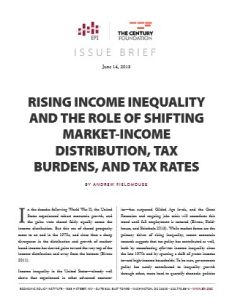Join getAbstract to access the summary!

Join getAbstract to access the summary!
Andrew Fieldhouse
Rising Income Inequality and the Role of Shifting Market-Income Distribution, Tax Burdens and Tax Rates
EPI, 2013
What's inside?
US tax policy has been a significant driver of rising inequality in the United States.
Recommendation
US income inequality “has surpassed Gilded Age levels.” Federal budget policy analyst Andrew Fieldhouse looks at how the US tax regime exacerbated this disparity. He offers a new policy direction to reverse this trend and to generate revenue to reduce deficits. Though statistics-heavy, this paper is cogent and comprehensive. getAbstract recommends it to experts and laypeople interested in the relationship between tax policy and income inequality.
Summary
About the Author
Andrew Fieldhouse is a federal budget policy analyst and a fellow at the Century Foundation.


















Comment on this summary